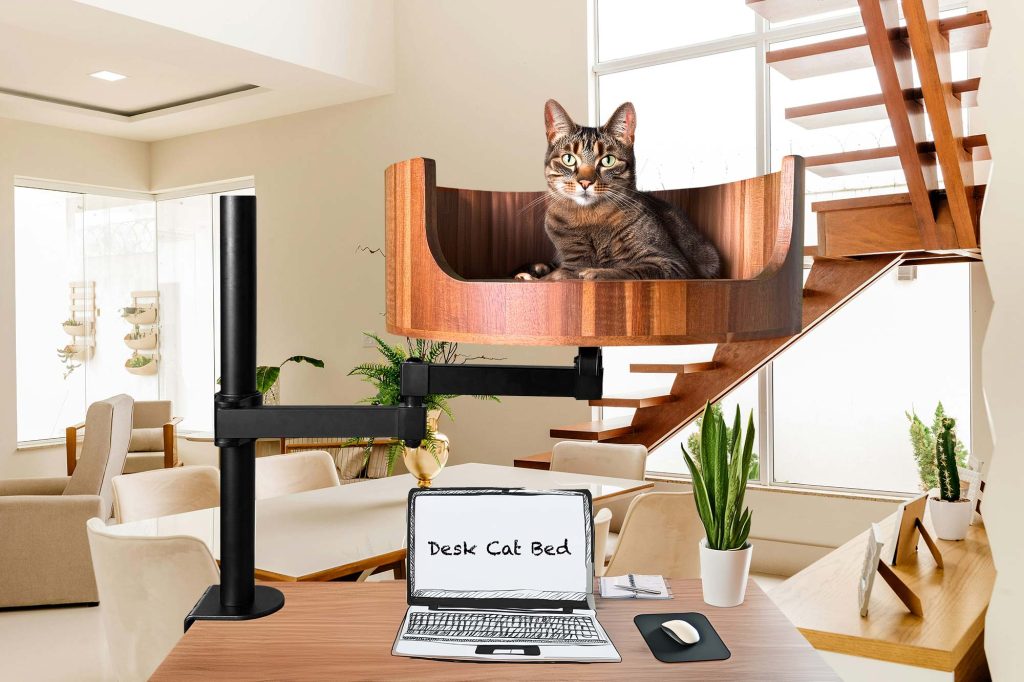Have you ever noticed your cat wagging its tail and wondered what it means? Understanding feline behavior can be a challenging task, but it is essential for building a strong bond with your furry friend. In this article, we will explore the intricacies of cat behavior, focusing specifically on the significance of tail wagging in cats.
Cats communicate through a variety of body language cues, with tail movements playing a significant role in conveying their feelings and intentions. Contrary to popular belief, tail wagging in cats does not always indicate happiness or excitement. In fact, different types of tail swishes can signal a range of emotions, from agitation and fear to curiosity and contentment. By learning to decipher your cat’s tail movements, you can gain valuable insights into their state of mind and better respond to their needs. So next time your feline companion starts wagging its tail, pay close attention to the context and accompanying cues to decode what they are trying to tell you. By understanding and responding appropriately to your cat’s body language, you can strengthen your bond and create a harmonious relationship with your beloved pet.
1. Tail wagging in cats is a common behavior that can indicate a range of emotions, from excitement to anxiety.
2. The position and speed of a cat’s tail wagging can provide clues about their mood and intentions.
3. Understanding feline body language, including tail movements, can help improve communication and strengthen the bond between cats and their owners.
4. Tail wagging should be interpreted in conjunction with other cues such as ear position, vocalizations, and body posture.
5. By observing and interpreting their cat’s tail movements, pet owners can better meet their feline companion’s needs and ensure a harmonious relationship.
Why Do Cats Wag Their Tails?
When a cat wags its tail, it is trying to communicate something to its human or another animal. There are several reasons why cats wag their tails, including excitement, stress, frustration, or even aggression. For example, a cat may wag its tail when it is feeling playful and eager to engage in a game with its owner. On the other hand, a cat may wag its tail rapidly from side to side when it is feeling threatened or irritated. Understanding the context in which your cat is wagging its tail can help you respond appropriately and meet its needs.
Types of Tail Wags
There are different types of tail wags that cats exhibit, each with its own meaning. A slow, gentle wag usually indicates contentment and relaxation, while a quick, choppy wag could signal excitement or irritation. For example, if a cat’s tail is puffed up and wagging rapidly, it may be feeling threatened or defensive. Paying attention to the speed and movement of your cat’s tail can help you interpret its mood and respond accordingly. It is essential to consider the overall body language of your cat in addition to its tail wagging behavior to get a complete picture of its emotional state.
Interpreting Tail Language
In addition to wagging their tails, cats use various other tail movements to communicate with their humans and other animals. For instance, a cat may twitch its tail tip when it is feeling curious or focused on something in its environment. A tucked tail could indicate fear or submission, while a high, erect tail signals confidence and a friendly attitude. By observing your cat’s tail movements alongside its other body language cues, such as ear position, vocalization, and posture, you can gain insights into its current emotional state and needs. Developing a deeper understanding of feline tail language can strengthen the bond between you and your beloved pet.
Frequently Asked Questions
Can the Desk Cat Nest help with cats wagging their tail excessively?
Yes, the Desk Cat Nest provides a cozy and comfortable space for your cat to relax and feel secure, which can help reduce stress and anxiety that may lead to excessive tail wagging.
Is the Desk Cat Nest suitable for all sizes of cats?
The Desk Cat Nest is designed to accommodate cats of various sizes, from small to medium. It is spacious enough for most cats to curl up and rest comfortably.
How do I introduce my cat to the Desk Cat Nest?
Place the Desk Cat Nest in a quiet and familiar location where your cat likes to spend time. Sprinkle some catnip or treats inside to entice your cat to explore and use the nest. Be patient and allow your cat to get comfortable at their own pace.
Is the Desk Cat Nest easy to clean?
Yes, the Desk Cat Nest is made with removable and washable fabric that makes cleaning a breeze. Simply remove the cushion and wash it according to the care instructions provided.
Can the Desk Cat Nest be used for outdoor cats?
The Desk Cat Nest is designed for indoor use only. It provides a safe and cozy space for your cat to relax and unwind indoors, away from potential outdoor hazards.
In conclusion, the Desk Cat Bed is a valuable choice for cat owners looking to help their feline friends wag their tails with contentment. With its cozy and secure design, this bed provides a comfortable and safe space for cats to relax and unwind, ultimately leading to a happier and more relaxed cat. Additionally, the elevated nature of the bed allows cats to observe their surroundings and feel more secure, contributing to their overall well-being. Investing in a Desk Cat Bed is not only a smart choice for your cat’s comfort, but also for their emotional health.


